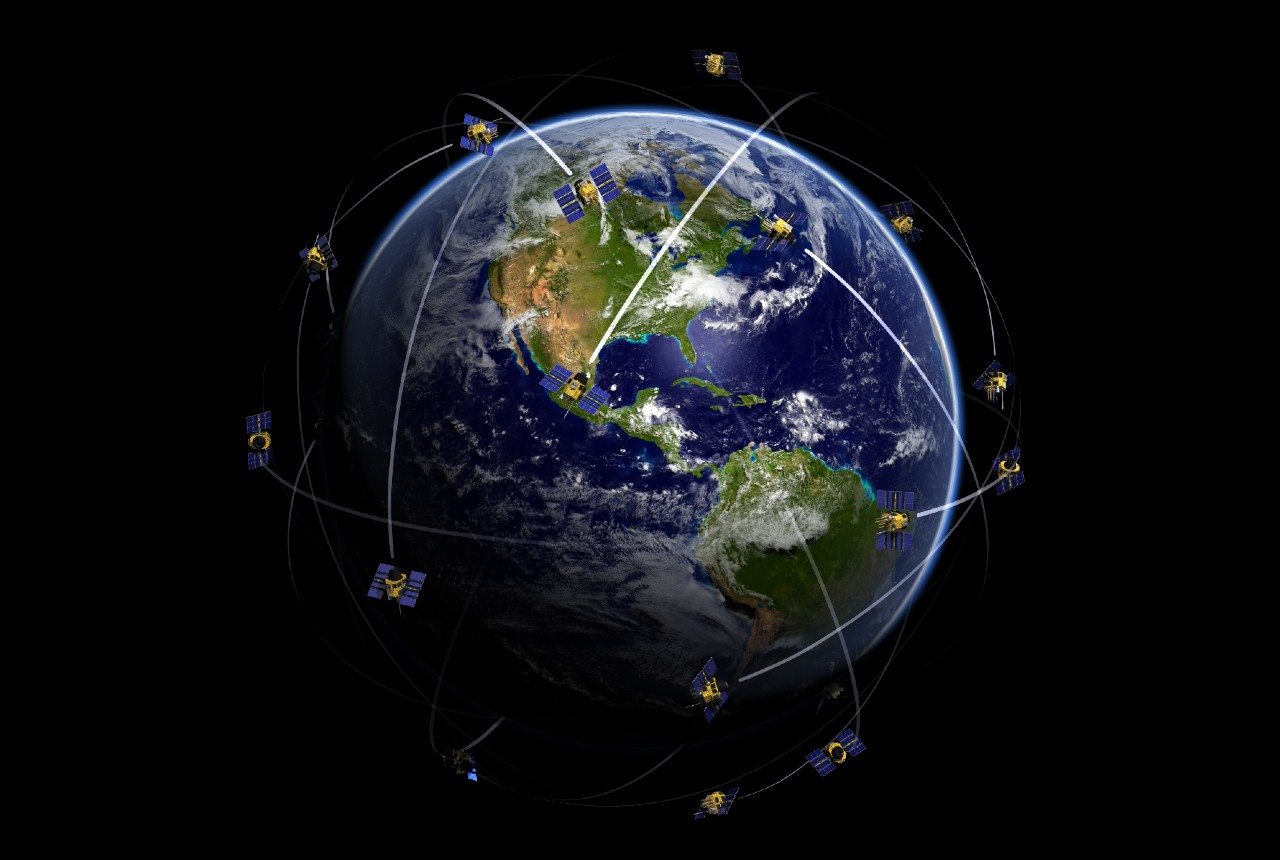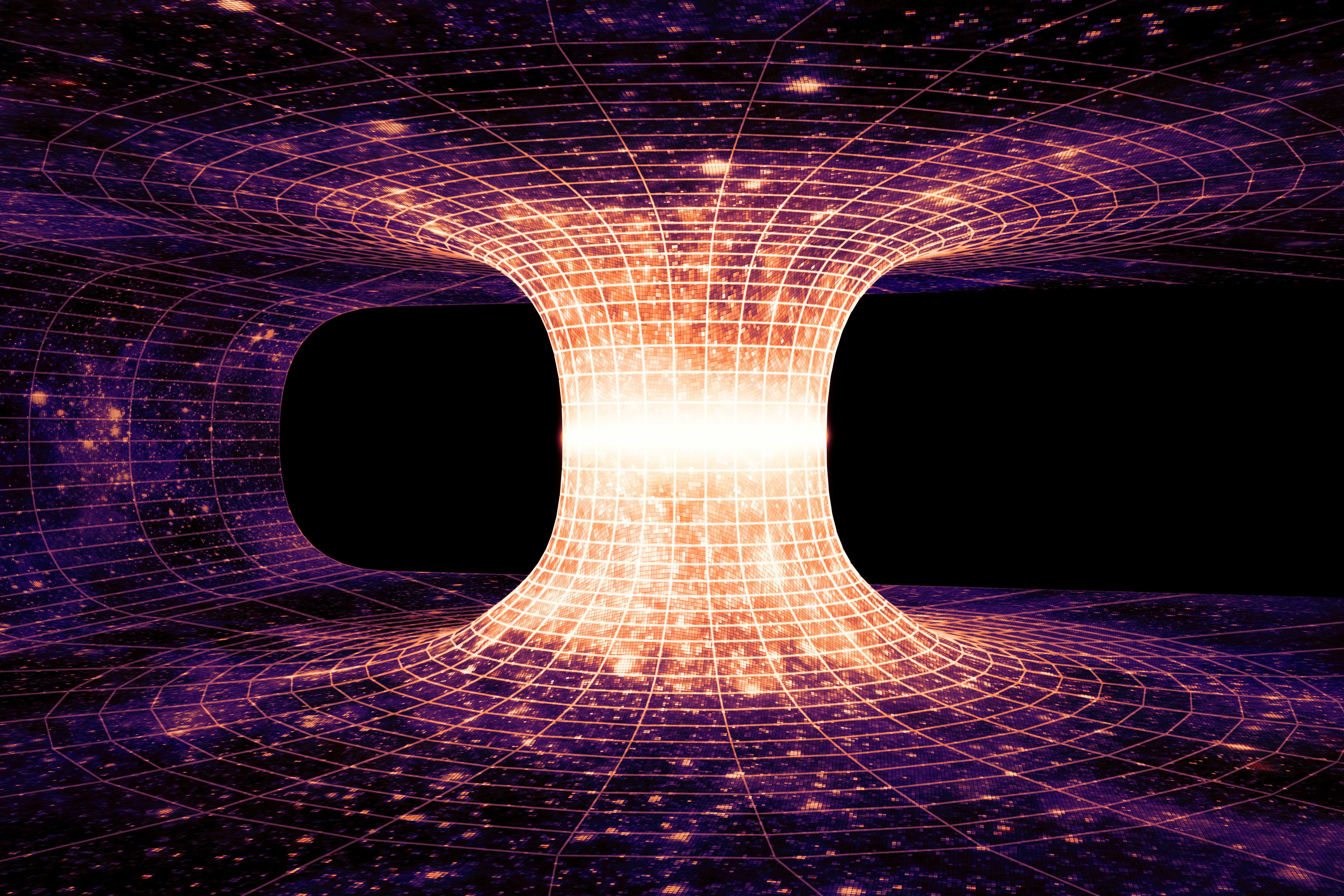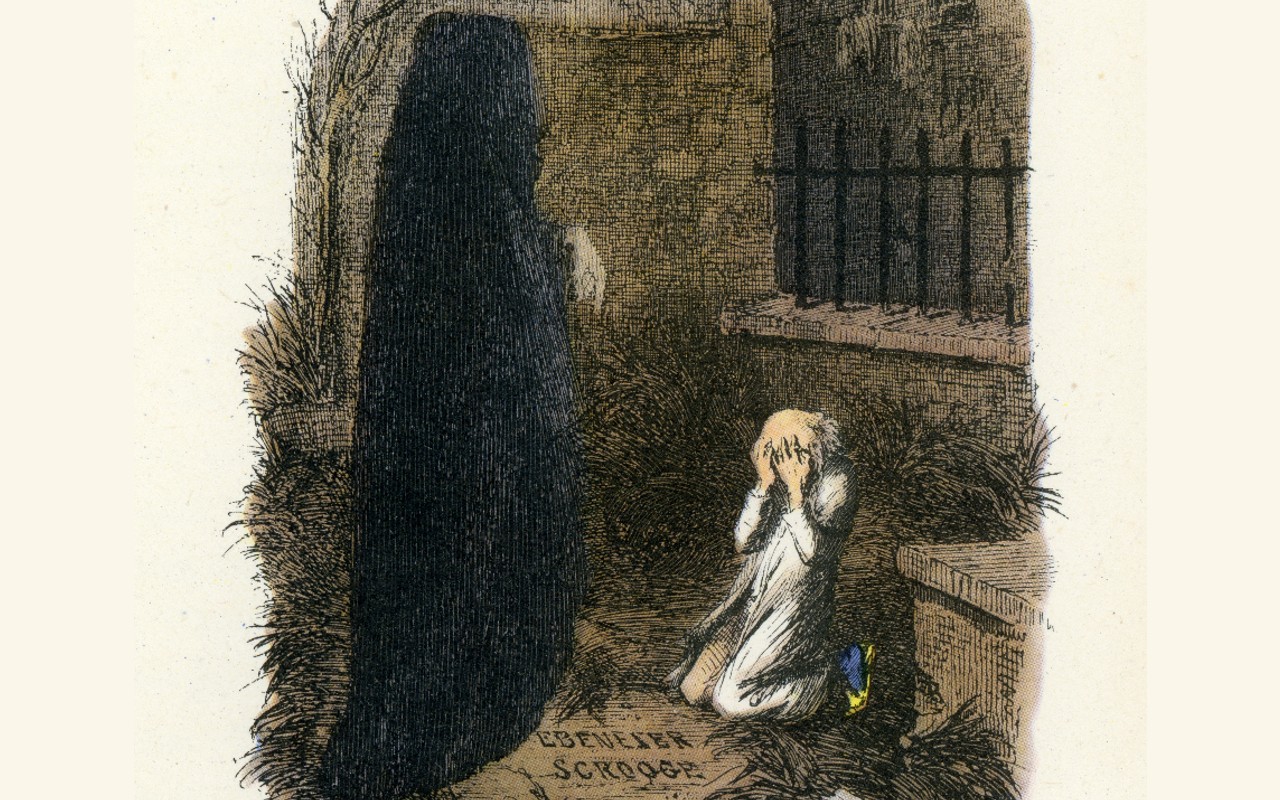Why Do People Want to Time Travel
Is fourth dimension travel possible?

Is time travel possible? Short respond: Yes, and you lot're doing information technology right now — hurtling into the future at the impressive charge per unit of one second per second. You lot're pretty much e'er moving through fourth dimension at the same speed, whether you're watching paint dry or wishing you had more hours to visit with a friend from out of town.
Merely this isn't the kind of time travel that's captivated endless scientific discipline fiction writers, or spurred a genre and so extensive that Wikipedia lists over 400 titles in the category "Movies about Time Travel." In franchises like "Doctor Who," "Star Trek," and "Back to the Futurity" characters climb into some wild vehicle to smash into the past or spin into the future. One time the characters take traveled through fourth dimension, they grapple with what happens if you change the past or present based on data from the futurity (which is where fourth dimension travel stories intersect with the thought of parallel universes or alternate timelines).
Related: The all-time sci-fi fourth dimension machines ever
Although many people are fascinated by the thought of changing the past or seeing the future before it'southward due, no person has ever demonstrated the kind of back-and-along time travel seen in science fiction, or proposed a method of sending a person through significant periods of time that wouldn't destroy them on the way. And, as physicist Stephen Hawking pointed out in his book "Black Holes and Baby Universes" (Bantam, 1994), "The all-time show we have that time travel is non possible, and never will be, is that nosotros have not been invaded by hordes of tourists from the future."
Scientific discipline does support some amount of time-bending, though. For instance, physicist Albert Einstein's theory of special relativity proposes that time is an illusion that moves relative to an observer. An observer traveling virtually the speed of lite volition feel time, with all its aftereffects (colorlessness, aging, etc.) much more slowly than an observer at remainder. That'southward why astronaut Scott Kelly aged ever so slightly less over the form of a year in orbit than his twin brother who stayed here on Earth.
Related: Controversially, physicist argues that time is real
In that location are other scientific theories most time travel, including some weird physics that arise around wormholes, black holes and string theory. For the most role, though, time travel remains the domain of an ever-growing array of science fiction books, movies, television shows, comics, video games and more.
Special relativity and time travel to the nigh future

Einstein developed his theory of special relativity in 1905. Along with his afterwards expansion, the theory of general relativity, it has become i of the foundational tenets of modernistic physics. Special relativity describes the relationship between infinite and fourth dimension for objects moving at constant speeds in a straight line.
The short version of the theory is deceptively elementary. First, all things are measured in relation to something else — that is to say, there is no "absolute" frame of reference. Second, the speed of light is abiding. It stays the aforementioned no matter what, and no matter where it's measured from. And tertiary, nothing can go faster than the speed of light.
From those simple tenets unfolds actual, real-life time travel. An observer traveling at high velocity will feel time at a slower charge per unit than an observer who isn't speeding through infinite.
While we don't advance humans to near-lite-speed, we do transport them swinging around the planet at 17,500 mph (28,160 km/h) aboard the International Space Station. Astronaut Scott Kelly was built-in after his twin brother, and swain astronaut, Marker Kelly. Scott Kelly spent 520 days in orbit, while Marker logged 54 days in space. The divergence in the speed at which they experienced time over the class of their lifetimes has actually widened the age gap between the two men.
"So, where[as] I used to exist just 6 minutes older, at present I am vi minutes and v milliseconds older," Mark Kelly said in a panel discussion on July 12, 2020, Space.com previously reported. "At present I've got that over his head."
General relativity and GPS time travel

The difference that low earth orbit makes in an astronaut's life span may exist negligible — better suited for jokes among siblings than actual life extension or visiting the distant hereafter — merely the dilation in fourth dimension between people on Earth and GPS satellites flying through space does brand a departure.
Read more: Can we stop time?
The Global Positioning System, or GPS, helps the states know exactly where we are past communicating with a network of a few dozen satellites positioned in a loftier Globe orbit. The satellites circumvolve the planet from 12,500 miles (20,100 kilometers) away, moving at 8,700 mph (xiv,000 km/h).
According to special relativity, the faster an object moves relative to another object, the slower that first object experiences time. For GPS satellites with atomic clocks, this result cuts 7 microseconds, or 7 millionths of a second, off each twenty-four hours, according to American Concrete Order publication Physics Central.
Read more: Could Star Trek'south faster-than-light warp drive actually work?
Then, according to general relativity, clocks closer to the center of a large gravitational mass like Earth tick more slowly than those farther away. So, because the GPS satellites are much farther from the center of Earth compared to clocks on the surface, Physics Primal added, that adds another 45 microseconds onto the GPS satellite clocks each day. Combined with the negative 7 microseconds from the special relativity calculation, the net result is an added 38 microseconds.
This means that in order to maintain the accurateness needed to pinpoint your motorcar or telephone — or, since the system is run by the U.Southward. Department of Defense force, a military drone — engineers must account for an extra 38 microseconds in each satellite's day. The atomic clocks onboard don't tick over to the side by side day until they accept run 38 microseconds longer than comparable clocks on Earth.
Given those numbers, it would take more than seven years for the diminutive clock in a GPS satellite to unsync itself from an World clock by more than than a blink of an eye. (Nosotros did the math: If you estimate a blink to last at least 100,000 microseconds, as the Harvard Database of Useful Biological Numbers does, it would have thousands of days for those 38 microsecond shifts to add upwards.)
This kind of time travel may seem as negligible as the Kelly brothers' historic period gap, but given the hyper-accuracy of mod GPS engineering, it really does thing. If it can communicate with the satellites whizzing overhead, your phone tin nail downwardly your location in space and time with incredible accuracy.
Can wormholes accept usa back in fourth dimension?
General relativity might also provide scenarios that could allow travelers to become back in time, according to NASA. Only the concrete reality of those time-travel methods are no piece of cake.
Wormholes are theoretical "tunnels" through the material of infinite-time that could connect different moments or locations in reality to others. Too known equally Einstein-Rosen bridges or white holes, every bit opposed to blackness holes, speculation about wormholes abounds. Simply despite taking up a lot of space (or infinite-time) in science fiction, no wormholes of any kind accept been identified in existent life.
Related: Best time travel movies
"The whole affair is very hypothetical at this point," Stephen Hsu, a professor of theoretical physics at the University of Oregon, told Infinite.com sis site Live Science. "No i thinks we're going to notice a wormhole anytime soon."
Primordial wormholes are predicted to be just x^-34 inches (ten^-33 centimeters) at the tunnel's "rima oris". Previously, they were expected to be too unstable for anything to be able to travel through them. Notwithstanding, a new report claims that this is not the instance, Alive Science reported.
The new theory, which suggests that wormholes could work equally viable infinite-fourth dimension shortcuts, was described past physicist Pascal Koiran. As part of the report, Koiran used the Eddington-Finkelstein metric, as opposed to the Schwarzschild metric which has been used in the majority of previous analyses.
In the past, the path of a particle could not exist traced through a hypothetical wormhole. However, using the Eddington-Finkelstein metric, the physicist was able to achieve but that.
Koiran's paper was described in October 2021, in the preprint database arXiv, before existence published in the Journal of Modern Physics D.

Alternate time travel theories
While Einstein's theories appear to make time travel difficult, some researchers have proposed other solutions that could permit jumps back and forth in time. These alternating theories share i major flaw: As far as scientists tin tell, in that location's no way a person could survive the kind of gravitational pulling and pushing that each solution requires.
Infinite cylinder theory
Astronomer Frank Tipler proposed a mechanism (sometimes known as a Tipler Cylinder) where ane could take affair that is 10 times the sun's mass, then roll it into a very long, but very dense cylinder. The Anderson Institute, a fourth dimension travel inquiry organization, described the cylinder as "a black hole that has passed through a spaghetti manufactory."
Subsequently spinning this blackness pigsty spaghetti a few billion revolutions per infinitesimal, a spaceship nearby — post-obit a very precise screw around the cylinder — could travel backwards in time on a "closed, fourth dimension-like bend," co-ordinate to the Anderson Institute.
The major trouble is that in social club for the Tipler Cylinder to become reality, the cylinder would need to exist infinitely long or be made of some unknown kind of affair. At to the lowest degree for the foreseeable future, endless interstellar pasta is beyond our attain.
Fourth dimension donuts
Theoretical physicist Amos Ori at the Technion-Israel Plant of Engineering science in Haifa, Israel, proposed a model for a time car made out of curved space-time — a donut-shaped vacuum surrounded by a sphere of normal matter.
"The auto is space-time itself," Ori told Live Science. "If nosotros were to create an area with a warp like this in space that would enable time lines to close on themselves, it might enable future generations to return to visit our fourth dimension."
There are a few caveats to Ori's time machine. First, visitors to the past wouldn't be able to travel to times earlier than the invention and structure of the fourth dimension donut. 2d, and more importantly, the invention and construction of this auto would depend on our power to manipulate gravitational fields at will — a feat that may be theoretically possible, just is certainly beyond our firsthand reach.
Fourth dimension travel in science fiction

Fourth dimension travel has long occupied a pregnant place in fiction. Since every bit early on every bit the "Mahabharata," an ancient Sanskrit epic poem compiled around 400 B.C., humans have dreamed of warping time, Lisa Yaszek, a professor of scientific discipline fiction studies at the Georgia Institute of Technology in Atlanta, told Live Science.
Every work of time-travel fiction creates its own version of space-time, glossing over one or more scientific hurdles and paradoxes to achieve its plot requirements.
Some make a nod to inquiry and physics, like "Interstellar," a 2014 pic directed by Christopher Nolan. In the movie, a grapheme played by Matthew McConaughey spends a few hours on a planet orbiting a supermassive black hole, but because of time dilation, observers on Earth experience those hours every bit a matter of decades.
Others have a more whimsical approach, like the "Doctor Who" television serial. The series features the Md, an extraterrestrial "Time Lord" who travels in a spaceship resembling a blue British police box. "People assume," the Medico explained in the bear witness, "that time is a strict progression from crusade to outcome, but really from a non-linear, non-subjective viewpoint, it'due south more like a large ball of wibbly-wobbly, timey-wimey stuff."
Long-standing franchises like the "Star Expedition" movies and television series, also as comic universes like DC and Curiosity Comics revisit the idea of time travel over and over.
Here is an incomplete (and securely subjective) listing of some influential or notable works of time travel fiction:
Books about fourth dimension travel:

- Rip Van Winkle (Cornelius S. Van Winkle, 1819) past Washington Irving
- A Christmas Carol (Chapman & Hall, 1843) by Charles Dickens
- The Fourth dimension Motorcar (William Heinemann, 1895) by H. G. Wells
- A Connecticut Yankee in Male monarch Arthur'south Courtroom (Charles L. Webster and Co., 1889) by Marker Twain
- The Restaurant at the End of the Universe (Pan Books, 1980) by Douglas Adams
- A Tale of Time Urban center (Methuen, 1987) by Diana Wynn Jones
- The Outlander series (Delacorte Printing, 1991-present) by Diana Gabaldon
- Harry Potter and the Prisoner of Azkaban (Bloomsbury/Scholastic, 1999) past J. Grand. Rowling
- Thief of Time (Doubleday, 2001) by Terry Pratchett
- The Time Traveler's Wife (MacAdam/Cage, 2003) by Audrey Niffenegger
- All You Need is Impale (Shueisha, 2004) by Hiroshi Sakurazaka
Movies about time travel:
- Planet of the Apes (1968)
- Superman (1978)
- Fourth dimension Bandits (1981)
- The Terminator (1984)
- Dorsum to the Future series (1985, 1989, 1990)
- Star Trek Iv: The Voyage Home (1986)
- Bill & Ted's Excellent Hazard (1989)
- Groundhog Day (1993)
- Galaxy Quest (1999)
- The Butterfly Result (2004)
- xiii Going on xxx (2004)
- The Lake House (2006)
- Run into the Robinsons (2007)
- Hot Tub Time Machine (2010)
- Midnight in Paris (2011)
- Looper (2012)
- Ten-Men: Days of Future Past (2014)
- Border of Tomorrow (2014)
- Interstellar (2014)
- Doctor Strange (2016)
- A Wrinkle in Time (2018)
- The Concluding Sharknado: It'southward Nigh Fourth dimension (2018)
- Avengers: Endgame (2019)
- Tenet (2020)
- Palm Springs (2020)
- Zach Snyder's Justice League (2021)
- The Tomorrow War (2021)
Goggle box about fourth dimension travel:

- Md Who (1963-nowadays)
- The Twilight Zone (1959-1964) (multiple episodes)
- Star Trek (multiple series, multiple episodes)
- Samurai Jack (2001-2004)
- Lost (2004-2010)
- Phil of the Future (2004-2006)
- Steins;Gate (2011)
- Outlander (2014-present)
- Loki (2021-present)
Games nearly time travel:
- Chrono Trigger (1995)
- TimeSplitters (2000-2005)
- Kingdom Hearts (2002-2019)
- Prince of Persia: Sands of Time (2003)
- God of War 2 (2007)
- Ratchet and Clank Future: A Crack In Fourth dimension (2009)
- Sly Cooper: Thieves in Time (2013)
- Dishonored two (2016)
- Titanfall two (2016)
- Outer Wilds (2019)
Boosted resource
- Explore physicist Peter Millington'south thoughts virtually Stephen Hawking's time travel theories at The Conversation.
- Bank check out a kid-friendly explanation of existent-world time travel from NASA's Infinite Place.
- For an overview of time travel in fiction and the commonage consciousness, read "Time Travel: A History" (Pantheon, 2016) by James Gleik.
Join our Space Forums to keep talking space on the latest missions, night sky and more! And if you lot take a news tip, correction or comment, permit united states of america know at: community@space.com.
0 Response to "Why Do People Want to Time Travel"
Post a Comment